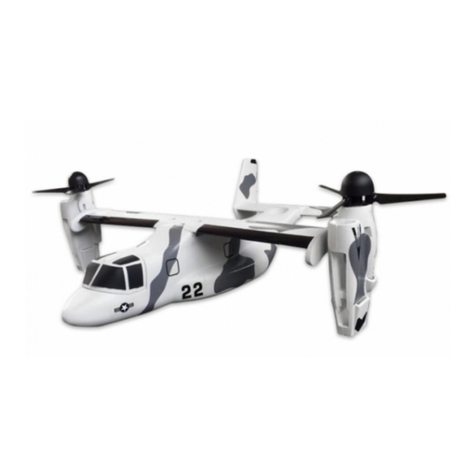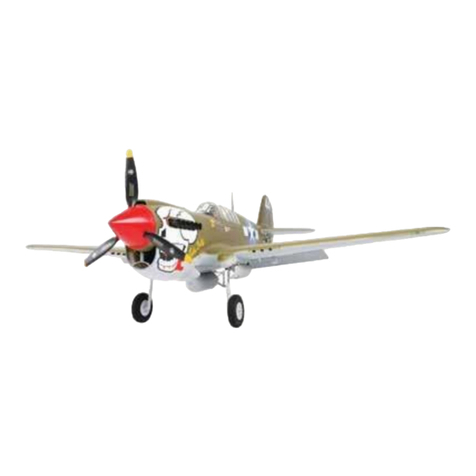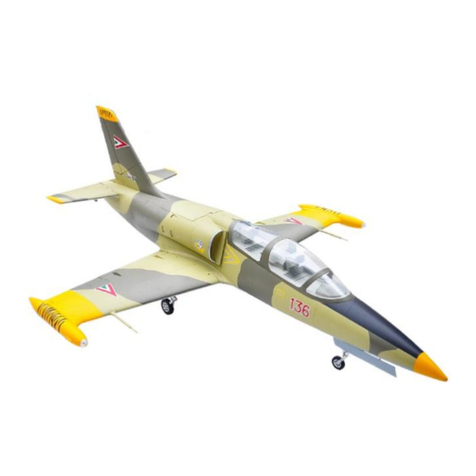It is very important that you review Banana Hobby’s policies before you continue on
any further reading this instruction manual or building your glider. Banana Hobby DOES
NOT accept any returns of aircrafts that have been assembled in any way. There is a
30 day warranty on this glider so make sure you test the electronics first before you
try to assemble your Sky Surfer. You can test your electronics by connecting the servo
wires into your receiver device without assembling the aircraft.
If you are missing anything from your package, you are required to report any missing
live chat systems online on our website, or call in at (626) 248-2888. We are open
Mondays through Fridays 9 AM to 6 PM PST. Banana Hobby reserves the right to not
comply with any missing parts request after 7 days have passed. This 7 day period
also includes any damages due to shipping. We will require digital pictures. If you are
unable to comply to our request, we will not be able to assist you.
You do have a 30 day warranty time period to report any manufacturer’s defect. The
warranty time starts the day that you receive your package regardless of when you
open the package (whether it be a few months afterwards or a few weeks). Banana
Hobby is not responsible for any injuries or damages caused by user error or
mishandling as forewarned in this manual.
You are required to do a preflight check before every flight to ensure that your radio
system is working properly. Banana Hobby does not cover any crash damages caused by
any defects that can be detected during a preflight check. For information on how to
do a preflight check, please turn to page 16 of this manual.
If at any time that you wish to return this Sky Surfer for a refund, you must make
sure that you are within the 30 day period after receiving your item and that it is not
assembled or used. Banana Hobby does not accept any returns of used and assembled
items. NO EXCEPTIONS.
For defective parts, you are required to report this problem to Banana Hobby within
your 30 day warranty period to receive replacement parts. For some defective parts, we
may require that you send us digital pictures and for you to send the defective part
back to us. For all return shipping, you will be responsible for shipping it back to us
and we will not reimburse you for the shipping fee. Banana Hobby however, will be
responsible for processing your defective part and for sending you a replacement of the
defective part. For all returned items, Banana Hobby needs up to 15 business days to
process. For more information, please review our policies at
www.BananaHobby.com/Support.html.
Please understand that this is a hobby and that you will need to do some modifications
here and there that involves cutting into the glider and soldering.
The battery balance charger that you received comes with a universal adapter that have
alligator clips at one end. Because the manufacturer is located overseas and that we do
ship worldwide to many different countries in all continents, the voltage system varies for
each person. To eliminate the danger of voltage incompatibility, the manufacturer has
supplied a universal adapter that plugs directly to your car’s battery. If you are using
this glider in North America, you can purchase a 12V DC wall adapter from any local
electronics store or on our website at www.BananaHobby.com under “RC Airplane Parts”
and then clicking on “RC Airplane Parts & Accessories”. The charging process may vary
depending on which model balance charger you receive. Please match the battery charger
that you received with one of the chargers below.
To connect the adapter to a car battery, use the end with the red and black alligator
clips. The red is for + (positive) and black is for – (negative). You don’t need to turn on
your car. DO NOT charge for more than 1.5 hours. This will damage the battery.
BC-3S10 2S/3S Balance Charger
1. Plug in the power source to the charger. The “Power” light will turn on.
2. Plug in the battery to the charger and the “Charge” light will turn red.
3. When the charge is complete, the “Charge” light will turn green.
BlitzRCWorks BZ-C005 Balanced Charger for Lithium Battery Pack
1. Plug in the power source to the charger. The “Status LED” will turn red.
2. Plug in the battery to the charger and the light will blink red.
3. When the charge is complete, this light usually turns solid red or turn off.
BlitzRCWorks V2 Balance Charger (ATI-0910)
1. Plug in the power source to the charger. The light will turn green.
2. Turn the dial between 1.0A and 0.3A.
This indicates how fast you want to charge your battery. The recommended setting to
prolong the battery life is 0.3A but this is the slowest charging rate. If you are in a
hurry, you can turn the dial to 1.0A for faster charging.
3. Plug in the battery to the charger and the light will turn red.
4. When the charge is complete, the light will turn green.
2S/3S LiPo Charger (YTF1003)
1. Plug in the power source to the charger. The “Power” light will turn on.
2. Plug in the battery to the charger and the left light will blink red.
3. When the charge is complete, the left light will turn green.
Starmax Balance Charger (ST-E00S-A1)
1. Plug in the power source to the charger. The light on the right will turn red.
2. Plug in the battery to the charger and the left light will turn green.
3. When the charge is complete, the left light should turn off.































